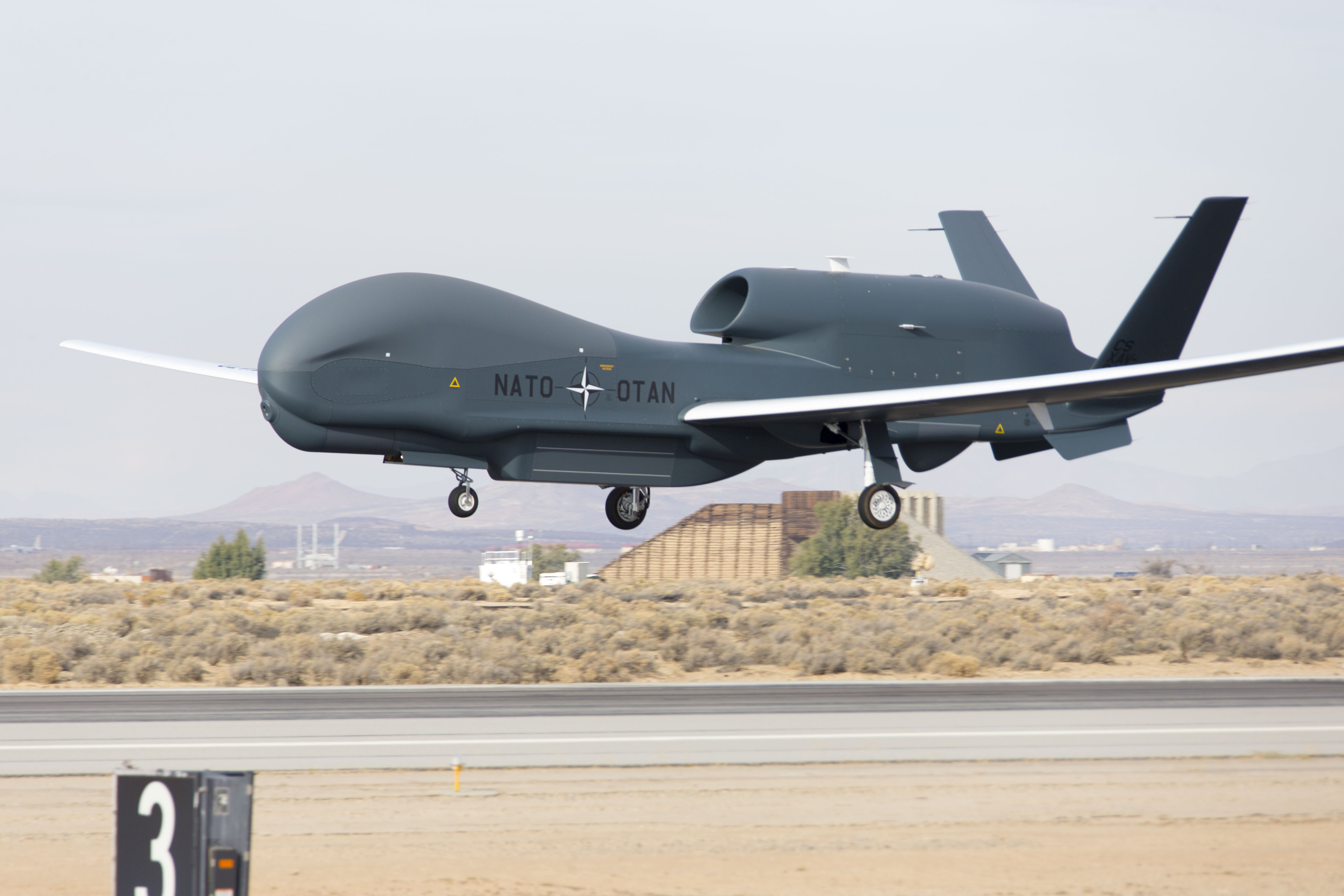By Rebecca Amber, Edwards Air Force Base Public Affairs /
Published December 21, 2015
EDWARDS AIR FORCE BASE, Calif. (AFNS) -- NATO's first
Alliance Ground Surveillance aircraft arrived at Edwards Air Force Base Dec. 19
completing its first flight.
The test flight marked the start of six months of ground and
airborne testing at Edwards AFB before the aircraft is sent to its new home in
Sigonella, Italy.
NATO AGS is a derivative of the wide-area surveillance RQ-4
Global Hawk, with a few small changes in the communications software to meet
certain criteria for operation in Europe.
"They've got a (few) differences, but it's very similar
to a U.S. Air Force Global Hawk," said Roberto Garnica, from the Global
Vigilance Combined Test Force and the NATO AGS project manager.
The first flight allowed the test team to observe the flying
characteristics of the aircraft during a variety of flight performances and at
varying altitudes.
According to Garnica, this test varies from other Global
Hawk testing because the Global Vigilance CTF is not the executing test
organization. While Edwards Range Control and safety officers will be present,
responsibility for the test and aircraft falls on Northrop Grumman's team
including the pilots, test conductors and directors.
"Because it is a Direct Commercial Sale to NATO, the
Air Force is never going to own or possess it. So we are a participating test
organization," Garnica said.
The first flight was an important milestone for Northrop
Grumman Corp. and NATO Alliance Ground Surveillance Management Organization
members of NATO's Alliance Ground Surveillance Management Agency.
Northrop Grumman is scheduled to begin ferrying the first
NATO AGS aircraft to Italy in 2016. The NATO AGS system will include five
aircraft and European-sourced mobile and transportable ground stations that
will provide data link connectivity, data processing and exploitation
capabilities to multiple deployed and non-deployed operational users.
All 28 alliance nations will take part in the long-term support
of the program, but it is initially being procured by 15 NATO nations:
Bulgaria, Czech Republic, Denmark, Estonia, Germany, Italy, Latvia, Lithuania,
Luxembourg, Norway, Poland, Romania, Slovakia, Slovenia and the U.S.
The final product will be used for collective defense,
crisis management and cooperative security.
Like the Block 40 RQ-4 Global Hawk, the unmanned aircraft
has the ability to fly for up to 30 hours at a time. The high-altitude,
long-endurance system will perform all-weather, persistent wide-area
terrestrial and maritime surveillance in near real-time. The NATO-owned and
operated system will provide intelligence, surveillance and reconnaissance
capabilities to support a range of NATO missions such as protection of ground
troops and civilian populations, border control, maritime safety and
humanitarian assistance.
The aircraft is equipped with leading-edge technology,
including the Multi-Platform Radar Technology Insertion Program sensor. The
MP-RTIP sensor will provide critical data to commanders during operations, in
any weather, day or night. Utilizing the MP-RTIP sensor, the NATO AGS system
will be able to fuse sensor data, continuously detect and track moving objects
and provide imagery of selected objects.








